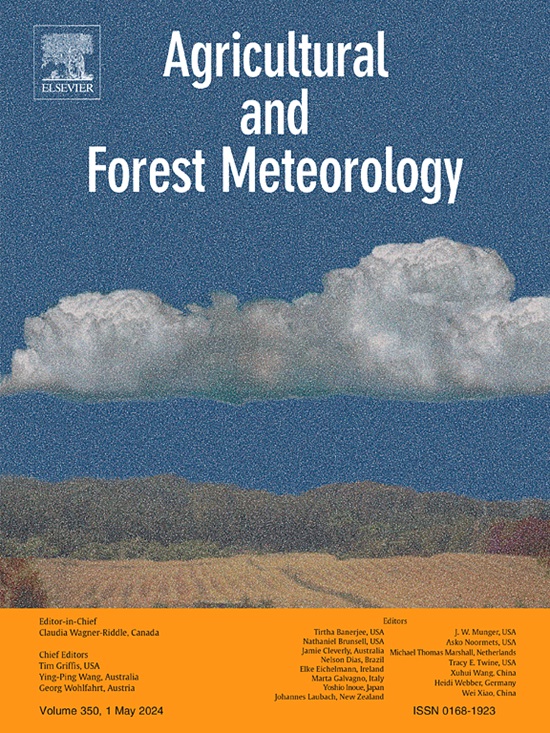The statistical analysis of shelterbelt structure and windproof efficiency
IF 5.6
1区 农林科学
Q1 AGRONOMY
引用次数: 5
Abstract
By means of statistical analysis, we show the influence of the basic characteristics of shelterbelt structures upon windproof efficiency. The significant factors are, in order of importance, shelterbelt height, species, density, and shelter breadth. The results of two statistical methods are the same. Thus the results appear to be valid for use in the design and establishment of shelterbelts.
防护林结构与防风效能的统计分析
通过统计分析,说明了防护林结构的基本特性对防风效果的影响。显著因子依次为防护林高度、防护林种类、防护林密度和防护林宽度。两种统计方法的结果是一致的。因此,研究结果对防护林的设计和建设具有一定的参考价值。
本文章由计算机程序翻译,如有差异,请以英文原文为准。
求助全文
约1分钟内获得全文
求助全文
来源期刊
CiteScore
10.30
自引率
9.70%
发文量
415
审稿时长
69 days
期刊介绍:
Agricultural and Forest Meteorology is an international journal for the publication of original articles and reviews on the inter-relationship between meteorology, agriculture, forestry, and natural ecosystems. Emphasis is on basic and applied scientific research relevant to practical problems in the field of plant and soil sciences, ecology and biogeochemistry as affected by weather as well as climate variability and change. Theoretical models should be tested against experimental data. Articles must appeal to an international audience. Special issues devoted to single topics are also published.
Typical topics include canopy micrometeorology (e.g. canopy radiation transfer, turbulence near the ground, evapotranspiration, energy balance, fluxes of trace gases), micrometeorological instrumentation (e.g., sensors for trace gases, flux measurement instruments, radiation measurement techniques), aerobiology (e.g. the dispersion of pollen, spores, insects and pesticides), biometeorology (e.g. the effect of weather and climate on plant distribution, crop yield, water-use efficiency, and plant phenology), forest-fire/weather interactions, and feedbacks from vegetation to weather and the climate system.

 求助内容:
求助内容: 应助结果提醒方式:
应助结果提醒方式:


